In April 1770 Captain James Cook sailed past Ulladulla as he made his way up the coast in HMS Endeavour and then, in January 1788, the First Fleet arrived in Port Jackson (later Sydney) bringing convicts, marines and a few free settlers to the new colony of New South Wales.
However it was not until 1827 that Surveyor Thomas Florance began to explore the area along the NSW South Coast between Jervis Bay and Moruya, calling Ulladulla Harbour either by its Aboriginal name ‘Wollahderrah’ or ‘Wasp Harbour’ after his survey boat. When taking bearings to Pigeon House Mountain, Florance used the Aboriginal name ‘Dithol’.
Rev. Thomas Kendall became the first European landowner in the area in 1828, after selecting 1,280 acres of land suitable for cedar-cutting north of present-day Milton. Rev. Kendall cleared a road from this property, ‘Kendall Dale’, south to Boat Harbour (Ulladulla) in order to ship the highly-prized red cedar to Sydney on the family’s 18-ton cutter ‘Brisbane’.
In 1832 ‘Brisbane’ was wrecked near Jervis Bay with the loss of all on board including Thomas.
Poet Henry Kendall, grandson of Thomas and famed for his ‘Bellbirds’ poem, was born in a bark hut on the Kendall property ‘Kirmington’ in 1839.

Timber continued to play a major part in the settlement of the area, providing employment for fellers, sawyers, log cutters, bullock and horse-team drivers and mill workers. At different times, there was great demand for cedar, ironbark, turpentine, mahogany, black butt, spotted gum, tallow-wood and wattle bark, depending on the need for buildings, bridges, jetties, ships, mine props or railway sleepers.
There were up to 60 sawmills between Nowra and Batemans Bay, with loading points along the coast for shipping. Little settlements grew up around isolated mills, often with just a school and post office to cater for the families.

The Mitchell Brothers’ sawmill stood in Ulladulla from 1927 to 1973, while a tannery, originally using wattle bark in the tanning process, operated on the opposite bank of Millards Creek from 1854 to 1933.
People, livestock, dairy products, vegetables and timber were transported in and out of the area only by sea for over 40 years, such was the primitive condition of the roads and frequent flooding of the many creeks. Rowing boats were needed to provide transport to and from ships in the harbour until the completion of the stone pier in 1865.
Shipwrights David and James Warden worked with Robert Gee on the southern shore of the harbour from 1840, using local timbers to building sailing ships until the 1860s. Only one ship, a twin-screw steamer made from spotted gum, was built at Bawley Point. A.W. Settree oversaw the construction of the ‘Douglas Mawson’ on a site near the sawmill, where it was launched in 1914. Small motor vessels were also built on Ulladulla Harbour for use during WW2.

An iron lighthouse stood on Ulladulla’s stone pier from 1873, with its keeper and his family living in a slab hut nearby. Identical to the Wollongong Harbour Lighthouse, it was moved to Warden Head in 1889 and is still in operation there. Steamers from the Illawarra and South Coast Steam Navigation Company continued to berth regularly at Ulladulla’s stone pier well into the 1950s, when road transport was becoming accessible and more popular.

The first keeper was a William Campbell, a former ship’s captain, who lived in a slab hut on the beach. The lighthouse stood on this site from 1873 to 1889, when it was moved to Warden Head, so that its light could be visible further out to sea.
For local transport, horses were used, often with drays and sulkies. Even in the late 19th century, the horse-drawn coach would take fourteen hours to travel from Ulladulla to the rail head at Kiama.
